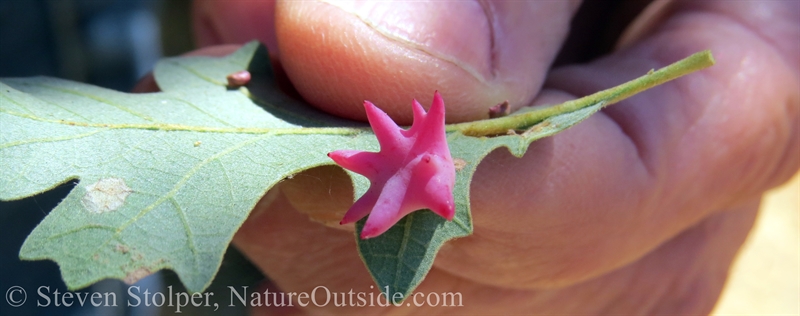
We all need shelter.
Whether it’s a shack in the woods or a condo in Miami Beach, we need protection from the elements to grow and thrive.
Some insects have evolved a unique way of securing shelter for their young. And you probably walk by hundreds of these dwellings every day.
They’re galls. And most of us never notice these amazing structures.
What is a Gall?
Imagine you can have someone else build a house for your children – for free! That’s what some insects do with plants. They fool the plant into building their house.
A gall is plant tissue. But it’s not a normal plant organ. A gall is induced by an insect using a chemical signal. In response, the plant produces the tissue that makes the gall.
Relatively few species of insects produce galls. But those that do are obligated to use them for reproduction. The most common gall producers are flies and wasps. Wasps that produce galls have chemicals in an ovipositor instead of stingers containing venom. So these wasps don’t sting. The ovipositor injects eggs and fluid into the plant. The fluid tricks the plant into producing a gall, even if the egg dies. With other species, the egg hatches into a larva that produces chemicals that induce the gall.
How does the wasp do this? Counterfeit hormone? DNA message? Science does not know.
Cecidology
Speaking of science, there is actually a branch dedicated to the study of galls – cecidology. It started in 1679 by Italian biologist and physician, Marcello Malpighi. Perhaps the most famous cecidologist was Alfred Kinsey, who became known for his later work on human sexual behavior.
Here’s a fascinating introduction to plant galls by KQED/PBS. It explains how galls came by their unusual name:
How to Identify a Gall
When you see a gall, you can identify the species of insect that made it. Asking the following questions, you can figure out whodunnit:
-
What is the host plant to which the gall is attached?
-
On what part of the plant is the gall attached?
-
Is the gall easily detachable from the host plant? Or would detaching it require tearing the stem, leaf, or other part of the plant?
-
What is the shape of the gall? If it’s covered with “hair”, what is the shape of the gall underneath?
-
What time of year did you find the gall?
Using these clues, you can identify the species of insect that created the gall. But be aware that there are many galls that science has yet to match to a species. So you can find a gall that science does not know about!
Gall Class
I took a “Gall Class” given by City of Cupertino, California at McClellan Ranch Preserve. The teacher was Dr. Kathy Schick of the Essig Museum of Entomology, University of California, Berkeley.
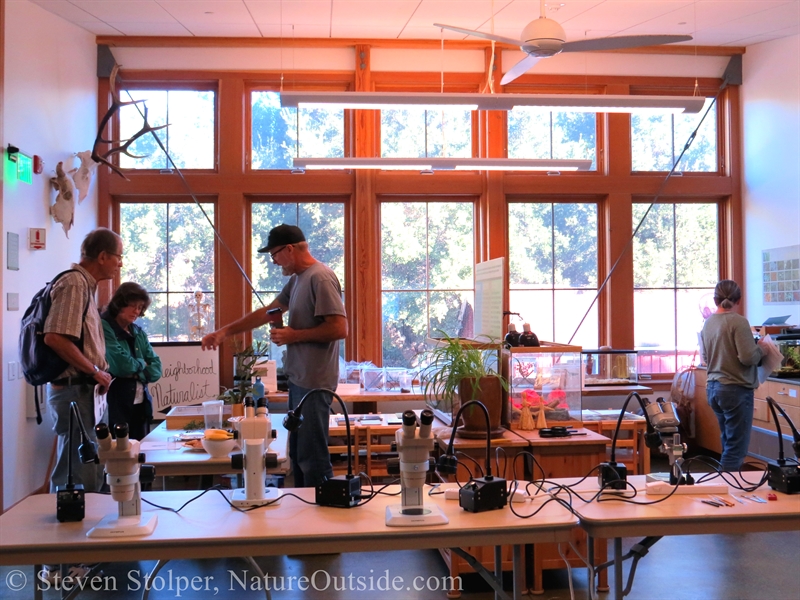
The classroom had lighted microscopes to examine galls we found
As part of the class, we went for a short walk around the grounds. It was amazing how many galls we found!
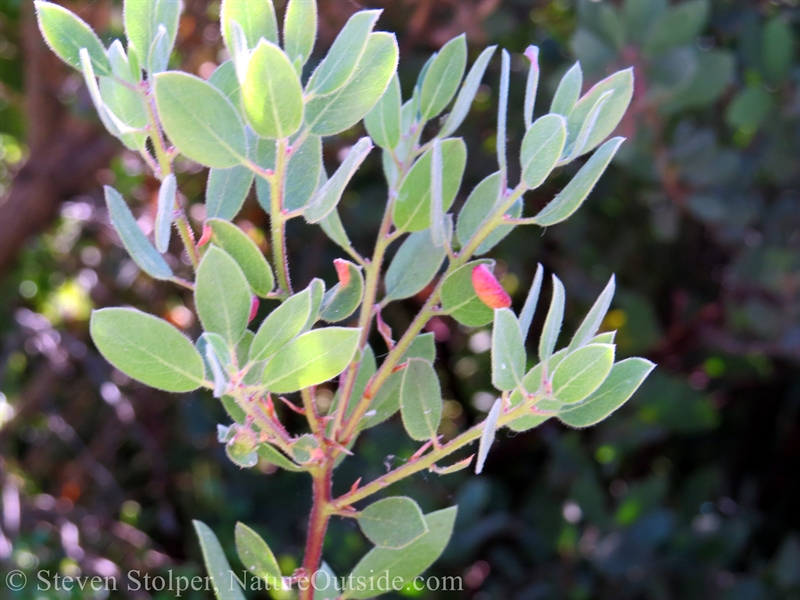
Manzanita with red galls on the tips of the leaves
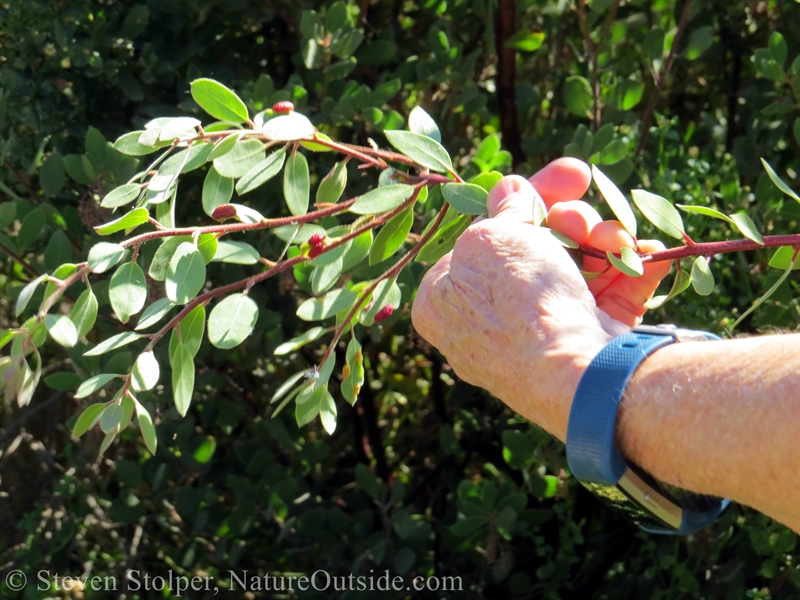
Most of the galls we saw were small
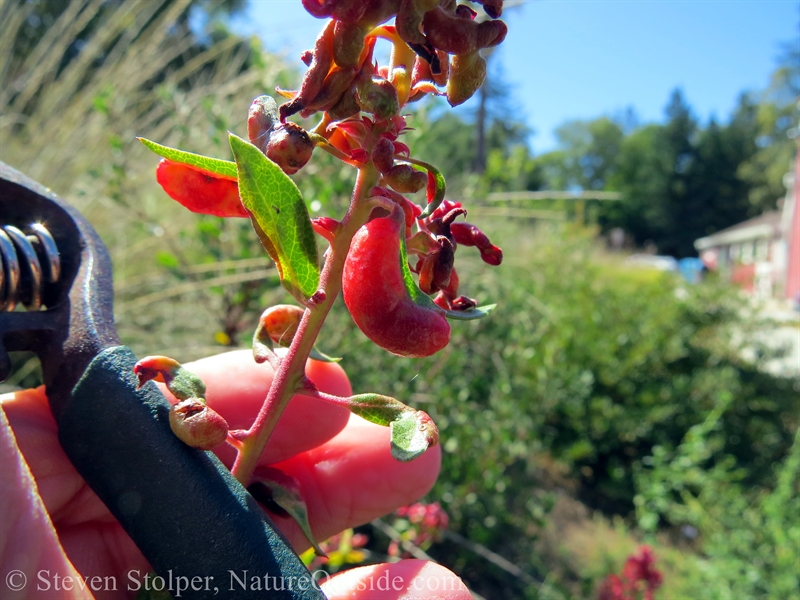
Close view of galls from the Manzanita Leaf Gall Aphid
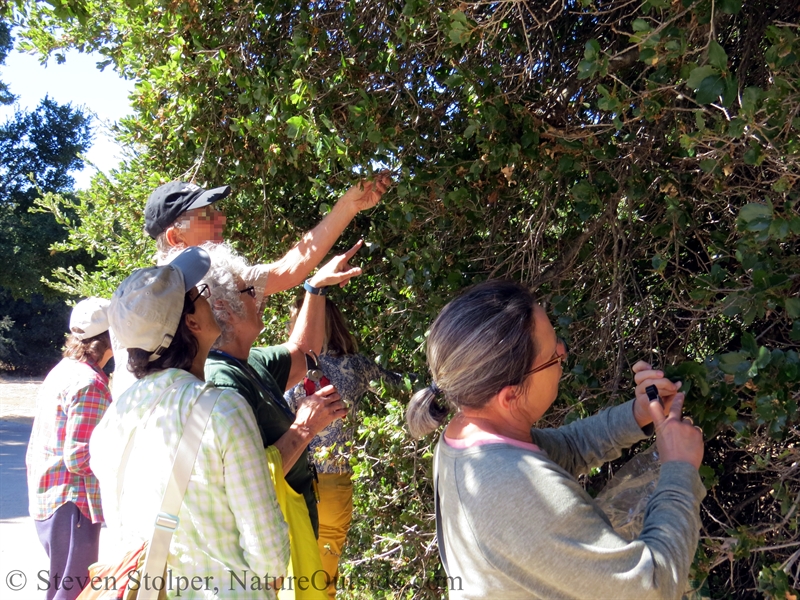
The class looks for galls on a Coast live oak tree
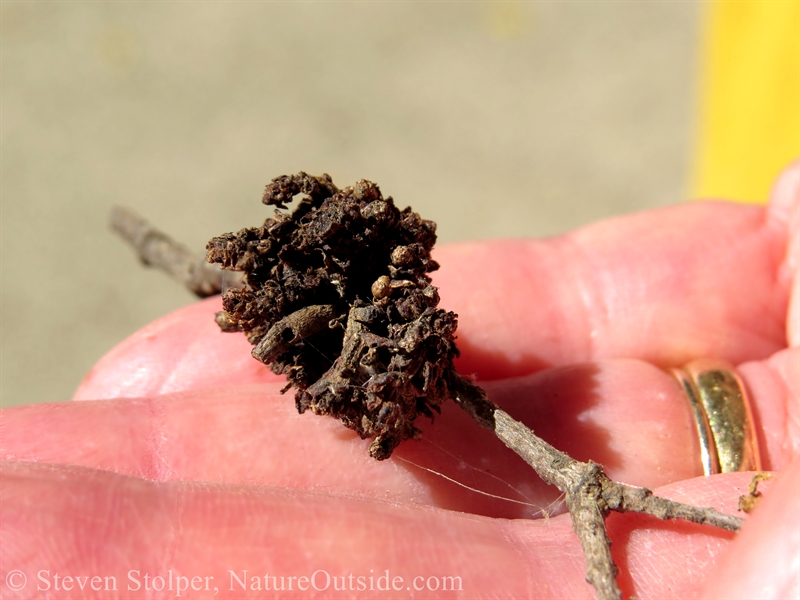
This gall has formed on the woody stem of the plant.
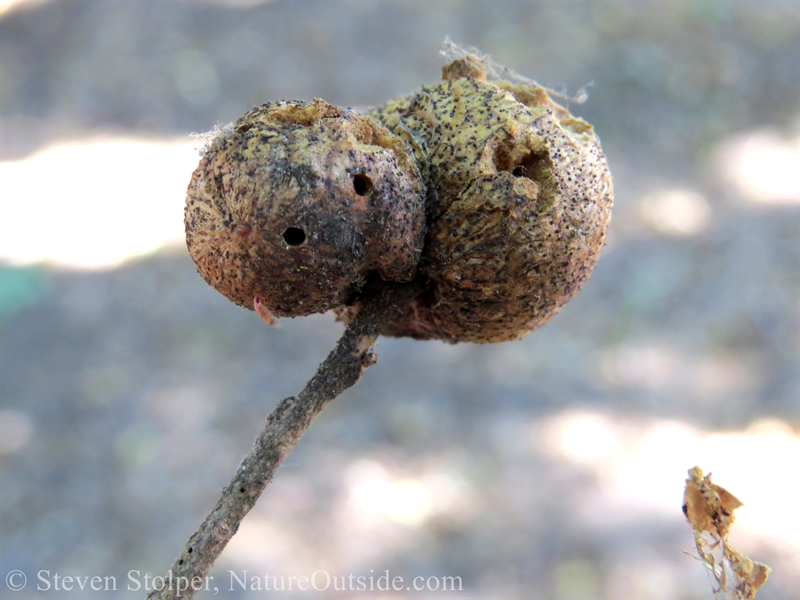
Gall from Live Oak Gallfly
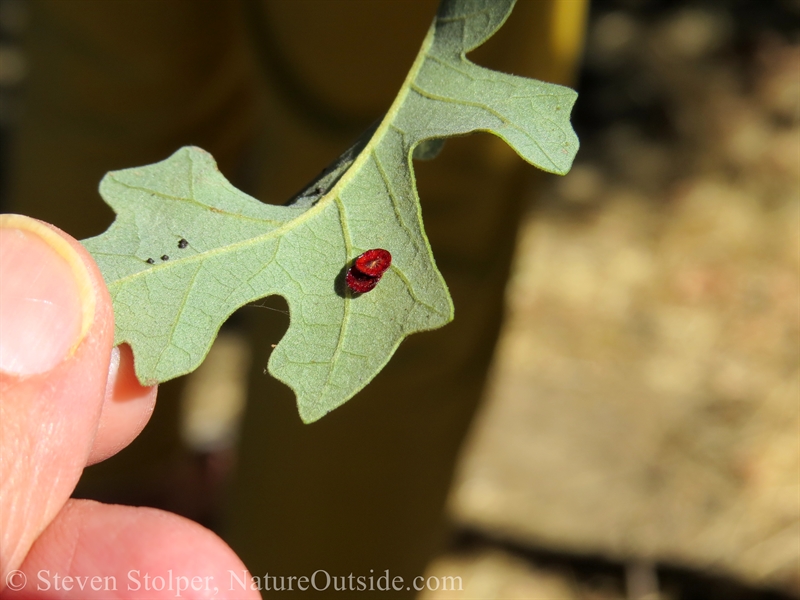
Gall from Disc Gall Wasp

Gall from Spined Turban Gall Wasp
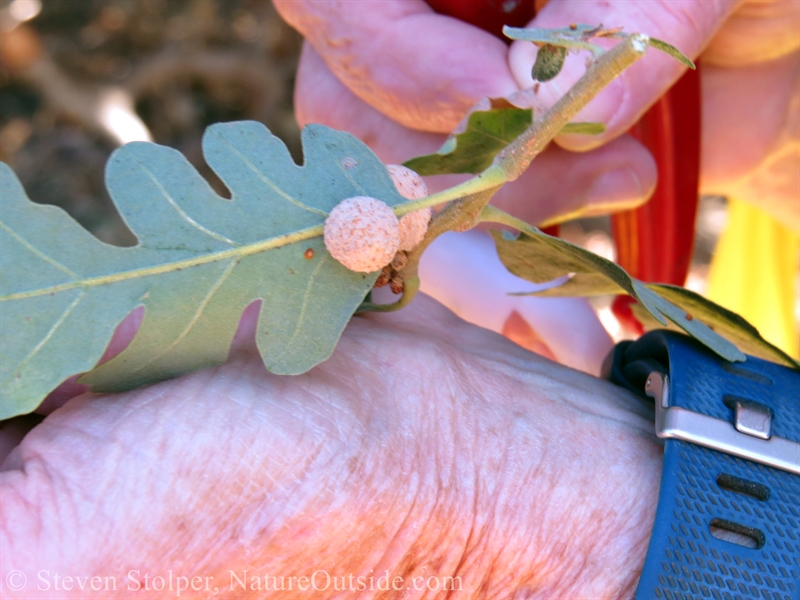
Gall from Round Gall Wasp
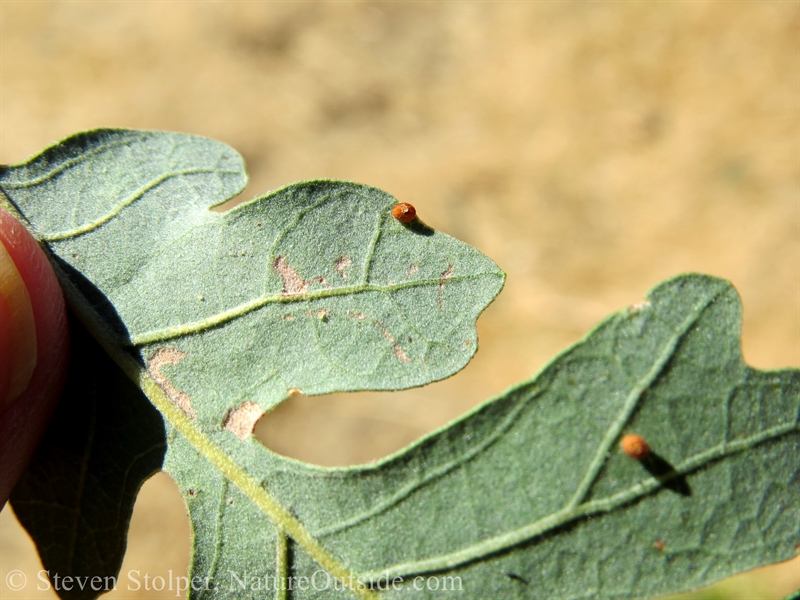
The famous jumping galls from the Jumping Oak Gall Wasp
We returned to the classroom after our walk to take a closer look at some of the galls we found.
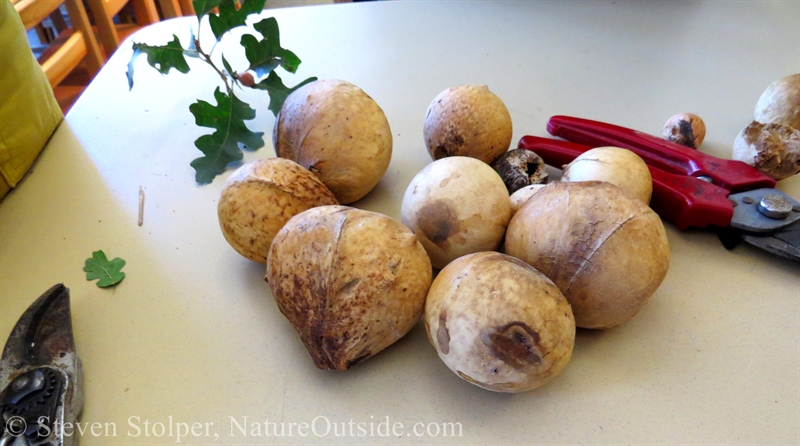
These large galls are from the California Gall Wasp
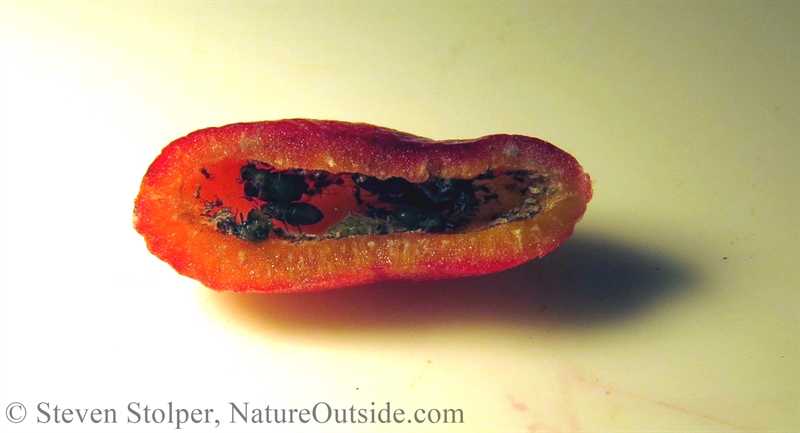
I sliced open a Manzanita leaf gall to find mature leaf aphids
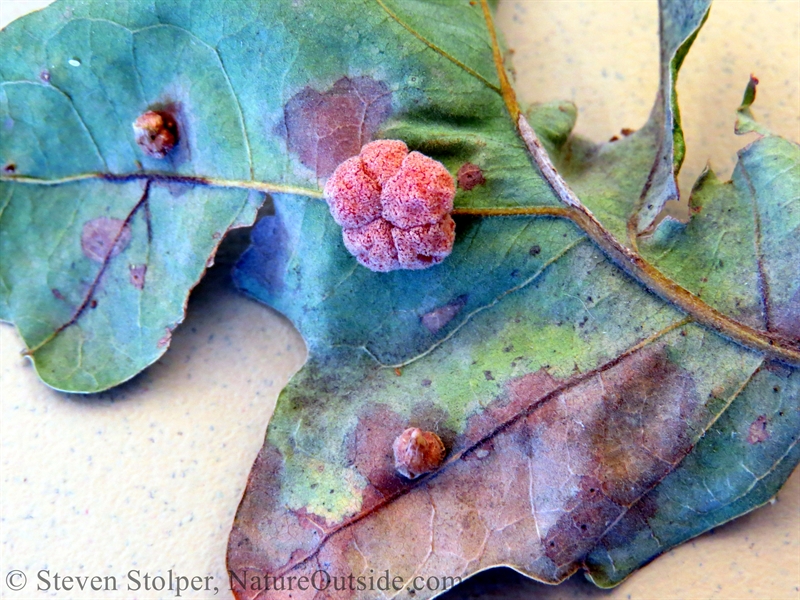
Galls are amazing structures
Have You Seen Galls?
Have you seen galls on your hikes? Let me know about them in the comments below.
Related Articles on NatureOutside
For fun facts and useful tips, join the free Bushcraft Newsletter.



Leave a Comment